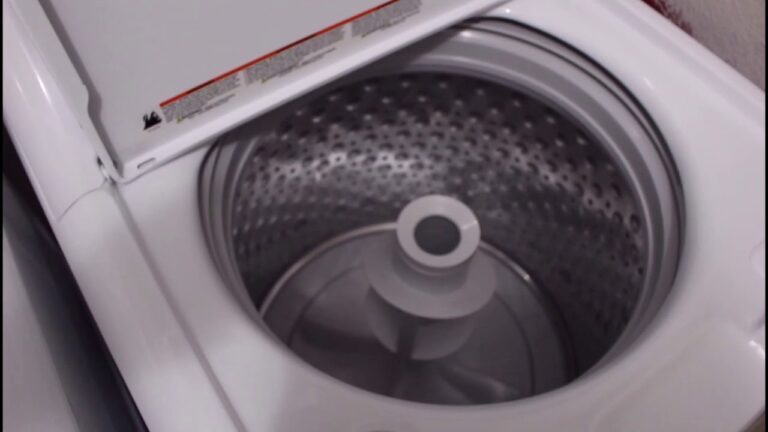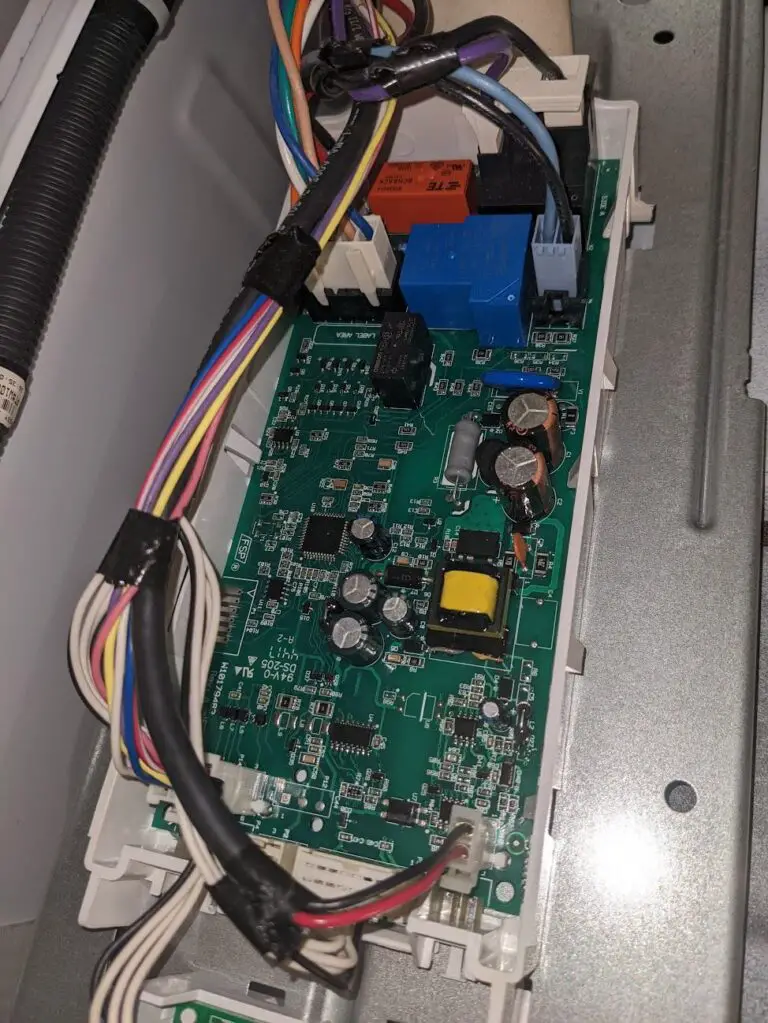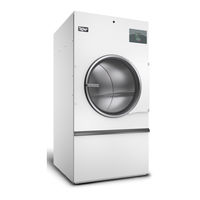Pentair Pool Heater Troubleshooting: Fixing Common Issues
To troubleshoot a Pentair pool heater, start by checking the pool filter for any dirt or debris that may be restricting water flow. Resetting the pool heater by flipping the breaker switch off and then on can also help resolve any issues.
Additionally, ensure that the gas pressure is within the specified operating pressures and that the gas valve is functioning properly. If the problem persists, it is recommended to contact a qualified service professional for further assistance. Remember to check the service system and service heater LEDs, which can indicate insufficient water flow or faults in the heater or its controls. For a comprehensive troubleshooting guide, refer to Pentair’s official manuals.

2. Common Issues With Pentair Pool Heaters
One of the best ways to enjoy your swimming pool year-round is by having a reliable pool heater. However, even the most high-quality pool heaters can sometimes experience issues. In this section, we will discuss the common problems that Pentair pool heaters may encounter, along with some troubleshooting tips to help you get back to enjoying your warm pool as soon as possible.
2.1 Pool Heater Turns On But Does Not Heat
A frustrating issue that some pool owners may encounter is when their Pentair pool heater turns on, but the water is not being heated. There could be a few reasons why this happens:
- Gas supply: Check if the gas supply is turned on and make sure there are no issues with the gas line or the ignition system.
- Filter or pump issues: A dirty or clogged filter or pump basket can restrict water flow, causing the heater to not heat the pool properly. Clean or replace the filter and check for any debris in the pump basket.
- Thermostat settings: Ensure that the thermostat is set to the desired temperature and is functioning properly. If needed, recalibrate or replace the thermostat.
2.2 Pool Heater Not Firing Up
If your Pentair pool heater is not firing up at all, there are a few potential causes to consider:
- Gas supply: Verify that the gas supply is adequate and that the gas valve is open. Additionally, check for any issues with the gas line, such as leaks or blockages.
- Ignition system: Inspect the ignition system for any faulty components or loose connections. Clean the ignition system if necessary, and ensure that the igniter is producing a spark.
- Thermostat settings: Double-check that the thermostat is set to the desired temperature and is functioning correctly. Consider replacing the thermostat if it is not working properly.
2.3 Pool Heater Keeps Shutting Off
If your Pentair pool heater consistently shuts off during operation, the following issues may be to blame:
- Blocked heat exchanger: Check if the heat exchanger is clogged with debris or scale buildup. Clean the heat exchanger thoroughly to ensure proper heat transfer.
- Water flow issues: Inspect the pool circulation system for any blockages, including valves that may be closed or restricted. Ensure that the water flow rates meet the heater’s requirements.
- High-limit switch tripped: The high-limit switch is a safety feature that shuts off the heater if the water temperature exceeds a certain limit. Check if the switch has tripped and reset it if necessary.
2.4 Service Heater Light
If your Pentair pool heater displays a “service heater” light, it indicates that there may be a more complex issue that requires professional assistance. Contact a qualified technician who specializes in Pentair pool heaters to diagnose and repair the problem efficiently.
3. Troubleshooting Steps For Pentair Pool Heaters
When it comes to troubleshooting your Pentair pool heater, there are a few essential steps you can take to identify and fix common issues. Understanding these troubleshooting steps can help you resolve problems quickly and get your pool heater up and running efficiently again. Let’s explore these steps in detail:
3.1 Checking Gas Pressure
If your Pentair pool heater is not heating properly, one possible cause could be low gas pressure. To check the gas pressure, follow these steps:
- Turn off the pool heater and wait for it to cool down.
- Locate the gas supply line and ensure it is properly connected.
- Use a manometer to measure the gas pressure. It should be within the recommended range specified in your heater’s manual.
- If the gas pressure is low, contact a professional technician to adjust it accordingly.
3.2 Inspecting Heat Exchanger
A faulty heat exchanger can also result in poor heating performance. Here’s how you can inspect the heat exchanger:
- Turn off the pool heater and allow it to cool down.
- Remove the front panel to access the heat exchanger.
- Visually inspect the heat exchanger for any signs of corrosion, cracks, or other damage.
- If you notice any issues, it may be necessary to replace the heat exchanger to restore proper functionality.
3.3 Replacing Internal Bypass Valve
The internal bypass valve helps regulate the flow of water through the heater. If it becomes damaged or clogged, it can impact the heating performance. To replace the internal bypass valve:
- Turn off the pool heater and let it cool down.
- Locate the internal bypass valve, usually positioned near the heat exchanger.
- Disconnect the valve and remove it from the heater.
- Install a new internal bypass valve, ensuring it is properly connected and secured.
3.4 Replacing Thermal Regulator
The thermal regulator helps control the temperature of the pool water. If it fails, the heater may not heat the water correctly. To replace the thermal regulator:
- Turn off the pool heater and allow it to cool down.
- Locate the thermal regulator, typically found near the heat exchanger.
- Disconnect the wires connected to the regulator and remove it from the heater.
- Install a new thermal regulator, ensuring proper wiring connections.
3.5 Resetting The Pool Heater
If all else fails, you can try resetting the pool heater to resolve minor issues. Here’s how:
- Locate the breaker switch in your electrical panel that controls the pool heater.
- Turn the breaker switch “off” and wait for a few minutes.
- Switch the breaker back “on” to reset the pool heater.
By following these troubleshooting steps, you can address many common issues with Pentair pool heaters and get your pool back to the perfect temperature. Remember, if you’re unsure about any repairs or troubleshooting steps, it’s always best to consult a professional technician for assistance.
4. Diy Fixes For Pentair Pool Heaters
4. DIY Fixes for Pentair Pool Heaters
If you’re experiencing issues with your Pentair pool heater, there are several DIY fixes you can try before calling in a professional. These fixes can save you time and money, allowing you to get your pool back up and running as quickly as possible. In this section, we’ll explore some common troubleshooting techniques for Pentair pool heaters.
4.1 Jumping The High Limit And Temperature Sensor
If your Pentair pool heater is not heating up properly or turning on at all, it could be due to a malfunctioning high limit and temperature sensor. Jumping the high limit and temperature sensor is a simple way to test if the issue lies with these components.
To jump the high limit and temperature sensor, follow these steps:
- Turn off the power to your pool heater.
- Locate the high limit and temperature sensor, usually found near the burner assembly.
- Remove the wires from the high limit and temperature sensor.
- Use alligator clips to connect the two wires together.
- Turn on the power to your pool heater and check if it starts working properly.
4.2 Cleaning And Maintaining Pool Filters
A common reason why a pool heater may not be working efficiently is due to a dirty pool filter. A clogged filter can restrict water flow, leading to poor heating performance or even causing the heater to shut off.
To clean and maintain your pool filters, follow these steps:
- Turn off the pool pump.
- Remove the filter cartridge or backwash the sand or DE filter.
- Clean the filter element with a hose or replace if necessary.
- Reinstall the filter element and turn on the pool pump.
4.3 Fixing Rat Or Mouse Damage
Rats or mice can cause damage to your pool heater’s wiring or other components. If you suspect rodent damage, it’s important to fix it promptly to prevent further issues.
To fix rat or mouse damage, follow these steps:
- Inspect the pool heater for signs of chewed wires or other damage.
- Replace any damaged wires or components.
- Secure any openings or entry points to prevent rodents from entering in the future.
4.4 Testing And Adjusting Pool Pump
The pool pump plays a crucial role in circulating water through the pool heater. If the pump is not working properly, it can affect the performance of the heater.
To test and adjust your pool pump, follow these steps:
- Check the pump’s speed settings and ensure it is operating at the correct speed.
- If necessary, adjust the pump’s speed using the control panel or consult the manufacturer’s instructions.
- Monitor the water flow and pressure to ensure it is consistent and within the recommended range.
4.5 Checking For Leaks
Leaks in the pool heater can cause a loss of heat and reduce its efficiency. It’s important to regularly check for leaks and fix them as soon as possible.
To check for leaks in your pool heater, follow these steps:
- Inspect the heater for any visible signs of leakage, such as water drips or puddles.
- Check all connections and fittings for signs of looseness or damage.
- Tighten any loose connections or replace any damaged parts.
- Monitor the heater for any ongoing leaks and address them promptly.
Frequently Asked Questions
How Do I Reset My Pool Heater?
To reset your pool heater, turn off and then on the breaker switch in your electrical panel. Find the breaker in a disconnect box near the heater or in your home’s breaker panel.
Why Is My Pool Heater Not Firing Up?
The most common reason why your pool heater is not firing up is due to a dirty swimming pool filter. A dirty filter can restrict water flow, preventing the heater from functioning properly. To fix this, clean or replace the filter and ensure proper water flow.
Why Does My Pentair Pool Heater Keep Shutting Off?
The most common reason for a Pentair pool heater shutting off is a fuel delivery issue. This could be due to low or high gas pressure, the gas being turned off, or a failed gas valve. Make sure to check the gas pressure with a manometer to ensure it is within the specified operating pressures.
What Does Service Heater Light Mean On Pentair Pool Heater?
The “service heater” light on a Pentair pool heater indicates that there is a fault in the heater or its controls. Ensure that the filter and skimmers are clean, and if the light remains illuminated, switch off the heater and contact a qualified service professional.
How Do I Reset My Pentair Pool Heater?
Reset your pool heater by flipping the breaker switch in your electrical panel “off” and then “on. ” Your breaker may be located in a disconnect box near your pool heater or in the breaker panel in your home.
Conclusion
If you’re experiencing issues with your Pentair pool heater, troubleshooting the problem can help get your heater back up and running efficiently. From checking gas pressure to jumping wires, there are various steps you can take to identify and resolve the issue.
Remember to ensure clean filters and skimmers, and contact a qualified service professional if needed. By following these troubleshooting tips, you can keep your pool heater in top shape and ensure a comfortable swimming experience.






Computer says E1 what does that mean?
Seeing ‘E1’ displayed on your Pentair Pool Heater typically indicates an error code related to ignition failure. It could be due to issues such as a blocked flue, insufficient gas pressure, or a faulty igniter. Checking these components and ensuring they are clean and functioning correctly might resolve the issue. If problems persist, consulting the heater’s manual or contacting Pentair customer support for specific troubleshooting guidance would be advisable
Computer says E1 what does that mean doesn’t come on
The E1 error code on a Pentair pool heater typically indicates an ignition failure. This can happen for various reasons, such as issues with the gas supply, a dirty or faulty igniter, or problems with the flame sensor. It’s a good idea to check if the gas valve is open and if there is adequate gas pressure. Additionally, inspect the igniter and flame sensor for any signs of dirt or damage. If the issue persists, it might be best to consult a professional technician to diagnose and fix the problem safely.
we have a error code that says ags what does that mean .
The error code “AGS” on a Pentair pool heater typically stands for “Auto Gas Shutoff.” This error usually indicates that the heater has detected a problem with the gas supply or ignition system and has automatically shut off to prevent further issues. To troubleshoot, you should check the gas supply, ensure there are no blockages, and confirm that the igniter and burner are functioning properly. If the problem persists, it might be best to contact a professional technician for a thorough inspection.
i have water coming out of the white plastic intake where the two tygon tubes are going into
Hi there! It sounds like you’re experiencing an issue with your Pentair pool heater. Water coming out of the white plastic intake can indicate a couple of things. First, check if the Tygon tubes are securely connected—sometimes, loose connections can cause leaks. If everything looks tight, you might want to check for any cracks or damage in the intake itself. If you’re still having trouble, it might be a good idea to contact a professional for help. Let me know if you need any more tips!